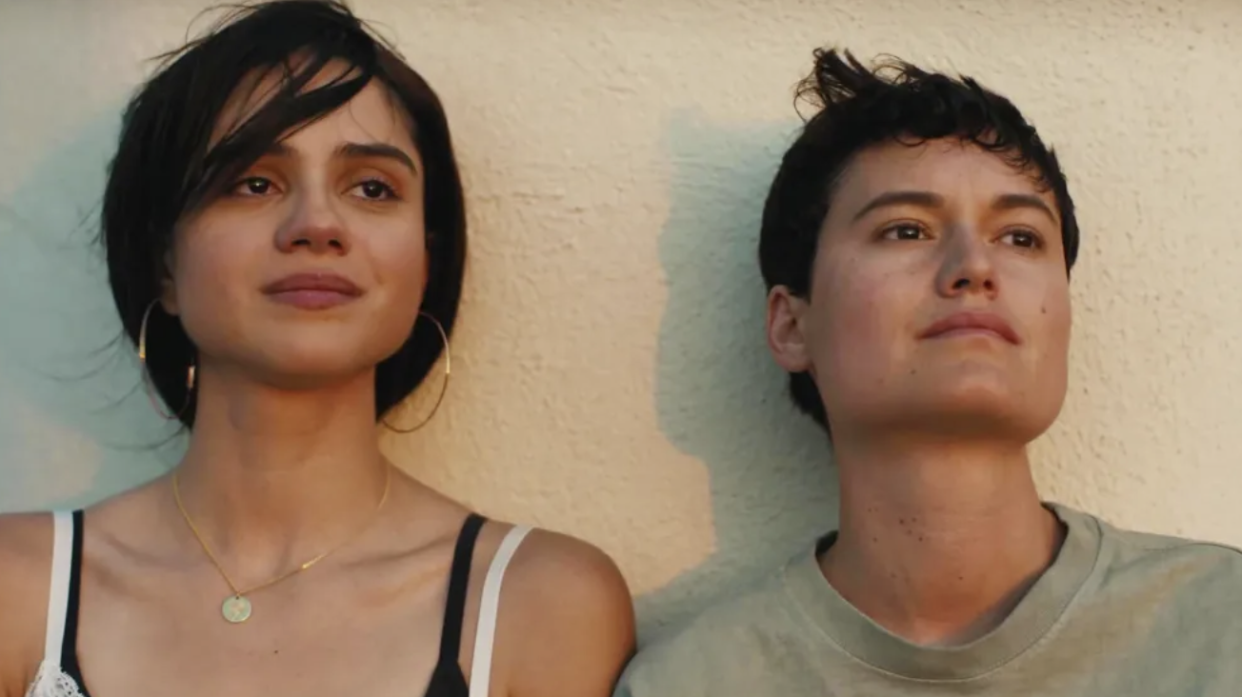‘In the Summers’ Review: Alessandra Lacorazza’s Debut Is an Intimate Snapshot of a Father and His Changing Daughters

In the opening moments of Alessandra Lacorazza’s lovely debut feature “In the Summers” a father, Vincente (Residente), nervously prepares his house for the arrival of his two daughters, Violeta and Eva, first portrayed by Dreya Castillo and Luciana Elisa Quinonez, respectively. He fluffs the pillows on the couch and throws away beer cans before going to pick the girls up at the tiny airport in his hometown.
The state of Vincente’s living room — inherited from his own deceased mother — becomes a signpost in the quiet drama about the bonds that are fused and then break between a parent and his children over many summer trips. We watch as it falls into disarray and then becomes neater again, its contents becoming a bellwether for how Eva and Violeta perceive their dad.
More from IndieWire
The film, which won this year’s U.S. Grand Prize in dramatic competition, is a delicate portrait of emotionally fraught relationships between family members who mostly have great physical distance between them. Lacorazza tells the story in four parts, switching out actors playing Violeta and Eva as years pass and the summers progress. We never are offered a glimpse of their lives outside of Las Cruces, New Mexico, where Vincente lives far from their mother in California. At times those missing details can make the film feel elusive, but ultimately the snapshot quality is effective. By the time we leave these characters we come to know all their love and resentment.
The first time we see Violeta and Eva come to visit Vincente, he slides into the role of fun-loving dad. He gives them gifts upon their arrival, takes them swimming in his backyard pool, and brings them to his local watering hole. Eva is immediately captivated, and even some Violata’s skepticism starts to fade away. But there are also signs that Vincente is keeping some of his behavior in check. He orders a full pitcher of beer. He considers it a fun game to drive erratically. His jitteriness belies something worse afoot.
By the time Eva and Violeta inch toward their teenage years—and are now played by Allison Salinas and Kimaya Thais—his alcohol and drug use becomes more obvious and their disillusionment is more pronounced. The pool has nearly dried up. At this moment Lacorazza starts to shift the focus onto the younger generation. What was once enchantment becomes anger as they come into their own personas — Violeta exploring queerness and Eva attempting as much as possible to fade into the background realizing the limits of her dad’s affections.
And, finally, when Violeta and Eva return home with “Mutt” star Lio Mehiel and “The Flash” Supergirl Sasha Calle in the roles, we get to see the adults that they have become, wearing the metaphorical and physical scars of their interactions with their father. Throughout all of this, they always have each other. They might not be stable, but they are stable for one another.
Each section is introduced with a tableau of a shrine consisting of mementos from the trips. The beautifully composed still lifes are indicative of how Lacorazza approaches nearly every scene.
Lacorazza fills the frames with delicate moments that deepen the audience’s understanding of these people as they try to pass the time on hot summer days. Vincente’s plans for their days become more lax so Eva is left to poke at a dead squirrel while Violeta peacocks for a crush. Eva starts to shrink under the unwelcome gaze of one of Vincente’s friends.
There are occasionally beats that carry almost too much portent, moments where we see one of the siblings fall into the behaviors of their father or take too long a pause as they contemplate the passage of time. Still, those are few compared to the many grace notes that Lacorazza finds.
While switching actors multiple times throughout a project has been an incredibly successful tool — take for instance “Moonlight,” to which “In the Summers” owes a lot — it has the chance to come off as gimmicky. Thankfully, here all the performers find wonderful echoes of one another and the transitions are never jarring. By the time Calle and Miehel enter they have absorbed the younger actors’ mannerisms so there is no question these are the same people.
Still, the most impressive work belongs to that of Residente, a Puerto Rican rapper otherwise known as René Pérez Joglar. As Vincente, Residente avoids the pitfalls of playing bad fathers. Even when he’s failing there’s always love behind his eyes and the magnetism of a man who is wasting away what is likely mathematical genius. Although we watch this person crumble and build himself up again, Residente finds the subtlety in his flaws and the regret that eventually overtakes him.
Along with cinematographer Alejandro Mejía, Lacorazza vividly renders Las Cruces, capturing the almost oppressive light of the sun against rose-tinted houses. You can almost sense the coolness of a darkened bar into which all the members of this family escape. There’s a level of care here that gives the film its meat even when the script itself is lacking.
Because of this attention to the environment that shapes these hot days, “In the Summers” is brimming full of its characters’ internal aches rendered elegantly across time.
Grade: B
“In the Summers” premiered at the 2024 Sundance Film Festival. It is currently seeking U.S. distribution.
Best of IndieWire
Sign up for Indiewire's Newsletter. For the latest news, follow us on Facebook, Twitter, and Instagram.
